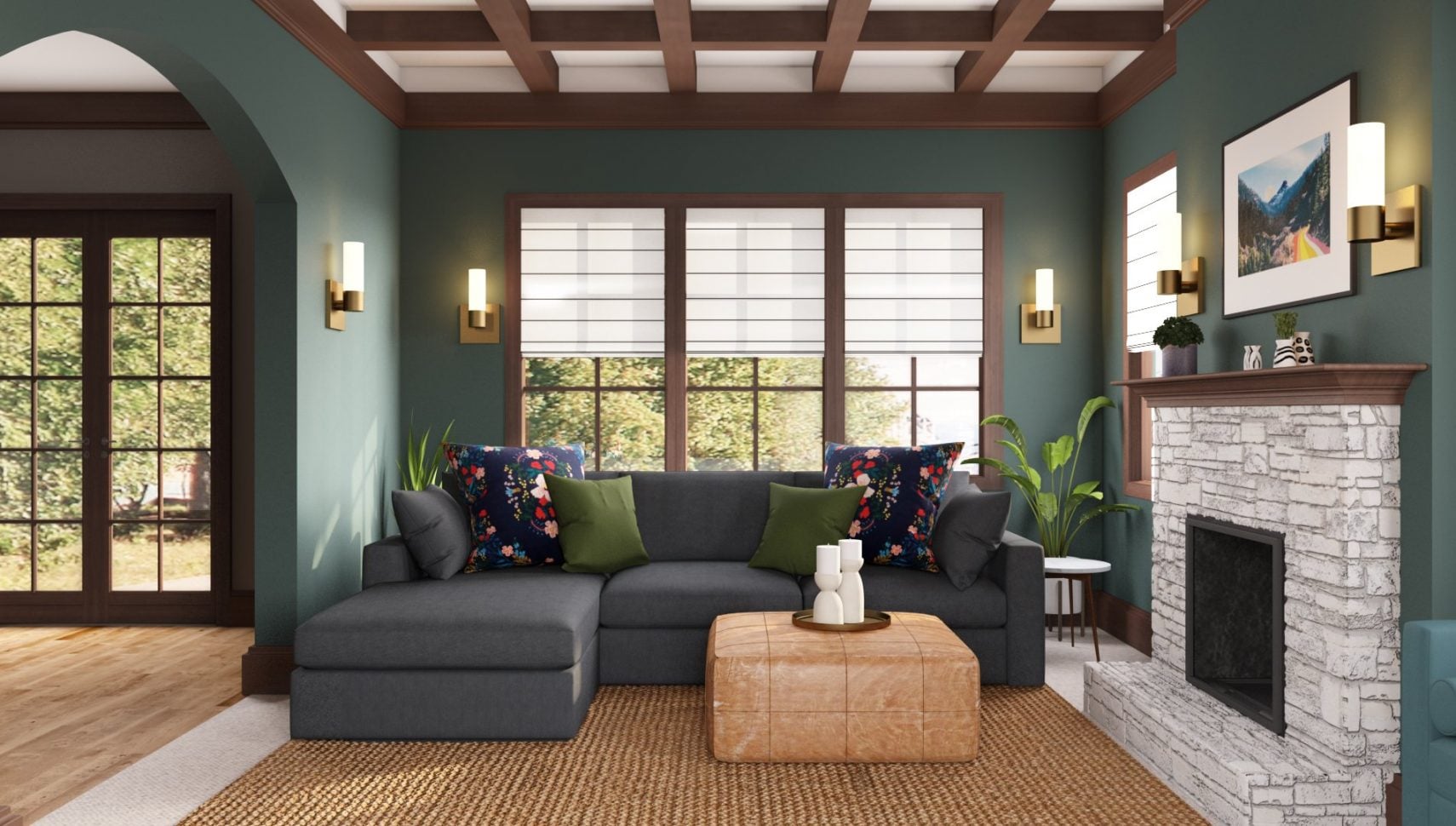Is your living room feeling stale? Tiny and cramped, or expansive and unwelcoming? Before you start drawing up a complete redesign, consider a new paint job.
In a high traffic space like your living room, you should consider repainting it every 5 to 7 years. Instead of using the same old shade, get adventurous and try a new hue to make the room feel dramatically different.
If you don’t mind doing it yourself, painting a room can cost as little as $200, and in an afternoon or weekend of painting, you can make your living room feel like a whole new space.
Grab your paintbrush, and try one of the following five shades to refresh your room.
Dark shades can feel intimidating, but don’t shy away from making a bold statement with a deep, dark green. Dark green can bring depth to the room, making it feel soothing and serene, like a forest in your home. If your living room has plenty of natural light, you won’t have to worry about the space feeling too dark, or cavernous. Choose a dark green in a matte finish, which will make the walls in the room feel seamless and expansive—any kind of shine could make the room feel smaller.
Have commitment issues? Try painting a single accent wall to start. If you love it, paint the whole room next.

White gets a bad rap for being blah or uninspiring, but in reality, it’s the opposite. If your living room feels drab or dated, consider a clean, crisp white to refresh the walls. It’s an old stand-by, but it’s a classic for a reason—painting your walls white can make a small living room with many walls feel larger, brighter.
If your living room lacks natural light, white walls will reflect it, making the room feel lighter and serene. And, if you have other design features in your living room that you want to “pop,” such as a bright sofa or bold gallery wall, white walls let those assets take center stage.

A neutral gray is far from boring. Painting your living room a chic blue-gray instantly adds an air of sophistication to the room. One of the best benefits of a neutral gray is its ability to complement nearly any design style—it’ll mesh with your minimalist living room, or fit in perfectly with your farmhouse-inspired den. A good gray can be a great backdrop for any style.

Classic blue is back in a big way. It’s actually Pantone’s Color of the Year for 2020 and can make a bold statement in any living room. While it’s all the rage now, classic blue is simultaneously timeless and elegant. It makes for a perfect accent wall shade in your living room. Use it to create depth—it can help the eye designate different spaces in an open concept home.

If you want to make the walls in your living room a conversation piece in and of themselves, look no further than a funky mustard yellow. This hue feels both retro and modern and can provide contrast against minimalist and white design elements in your living room. Similar to other bold hues, you’ll want to use a matte and make sure you have enough natural light that this shade reflects light in the space.
Want a mustard yellow, but have limited sunlight in your living room Maximize what you have by strategically hanging mirrors to reflect and double the light pouring in.

Before you take to renovating, or completely redesigning your living room, try a fresh coat of paint in a new shade. While it could take some elbow grease to complete, it’s one of the biggest bangs for your buck in reimagining a room. It can breathe fresh air into a space that feels dated, drab, small, or uninspiring.
Still searching for your sense of design? Take Havenly’s style quiz to see where you fit in.

